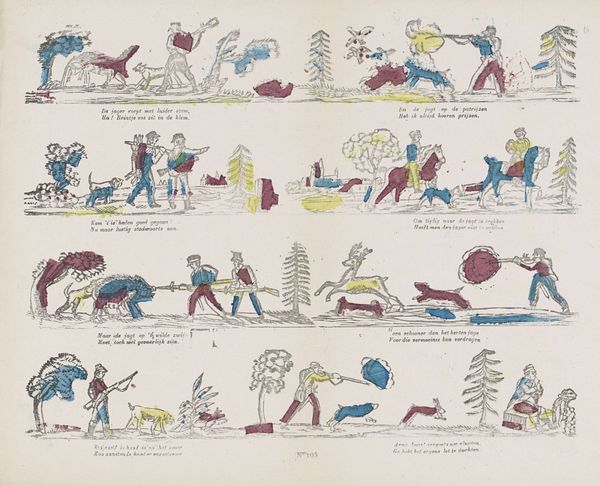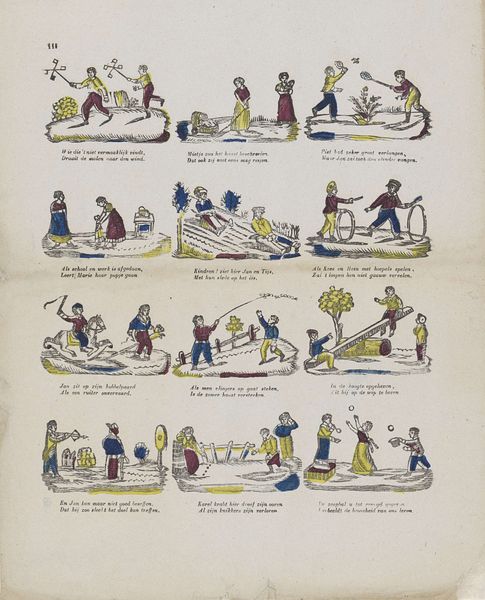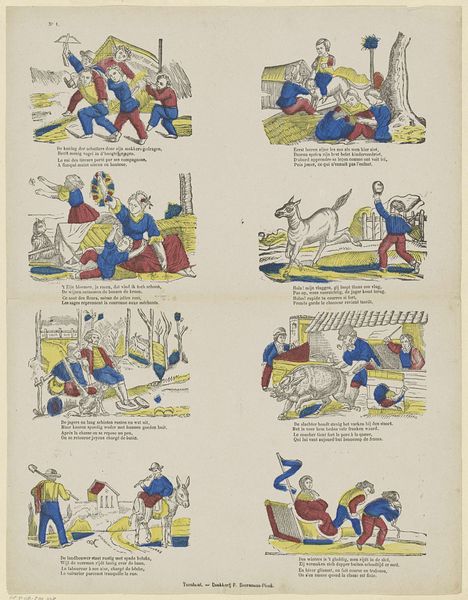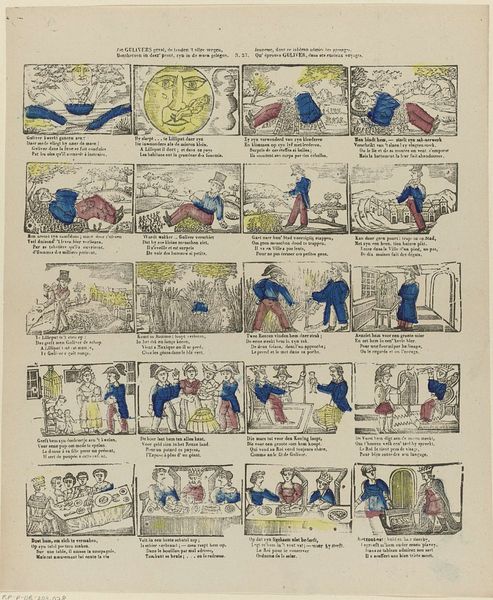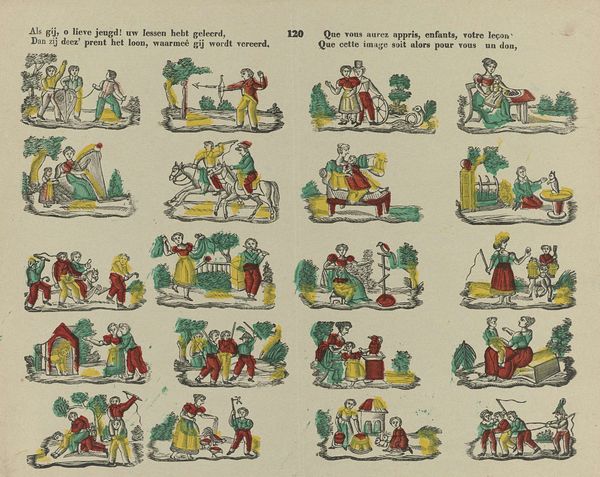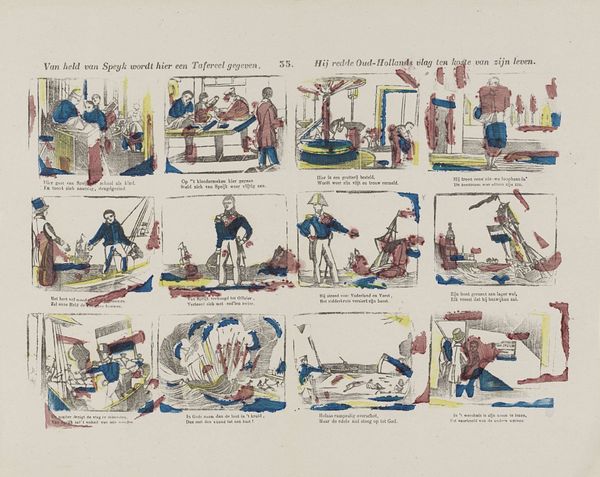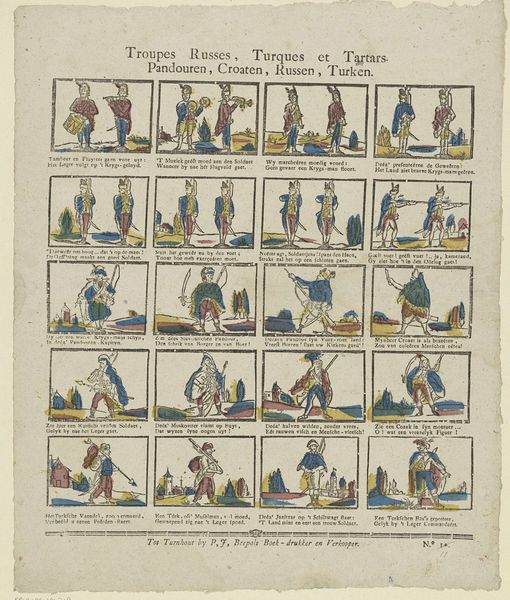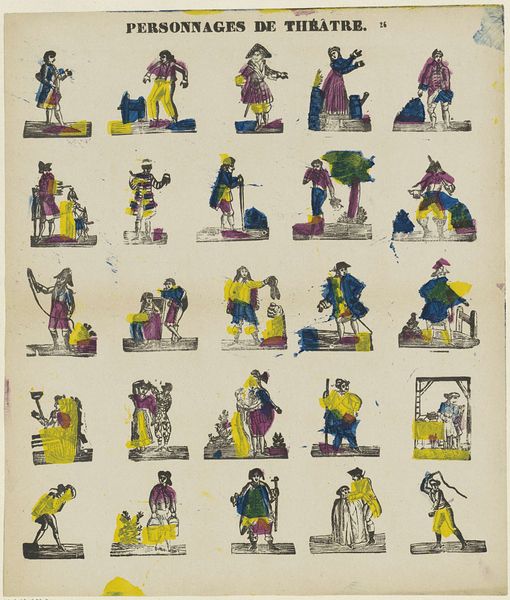
print, watercolor
narrative-art
dutch-golden-age
watercolor
watercolour illustration
genre-painting
Dimensions: height 310 mm, width 397 mm
Copyright: Rijks Museum: Open Domain
Editor: This is *Jachttaferelen* or Hunting Scenes, a watercolor print by Lutkie & Cranenburg made sometime between 1848 and 1881. I find its style really interesting, especially how naive and cartoonish it seems, which is pretty different from other Dutch Golden Age works. What do you see in this piece? Curator: The deliberate naïveté offers a fascinating lens through which to view 19th-century Dutch society and its relationship with nature. The "Hunting Scenes" remind us that the Dutch Golden Age, though celebrated, rested upon complex social and environmental structures. The scenes aren’t mere depictions of sport; they represent power dynamics between humans and animals, but also between different social classes. Editor: How so? Curator: Hunting was often a privilege of the elite. Do you notice the ways in which the hunters are portrayed, their postures, their attire, and even the landscape they inhabit? What do they suggest about the accessibility and control over resources at the time? Editor: Now that you point it out, they all do seem similarly well-dressed, suggesting a degree of affluence or a shared social status amongst the hunting group depicted. It’s also interesting how detached the humans are in posture in respect to the hunted animals in each depicted scenario. Curator: Precisely! The scenes become a tableau of dominance, reinforcing a certain hierarchy that extends beyond the hunt. So the apparent innocence is deceptive. By embracing this deceptiveness, how can we invite viewers to consider their own role in perpetuating social structures or challenging conventional aesthetics? Editor: So, by understanding the historical context and social commentary embedded within it, the artwork’s value goes far beyond being a collection of "naïve" drawings. Curator: Indeed, it becomes a mirror reflecting the values and biases embedded in our histories and the present. It certainly challenges us to think differently about artistic representations of gender, class, and power.
Comments
No comments
Be the first to comment and join the conversation on the ultimate creative platform.
